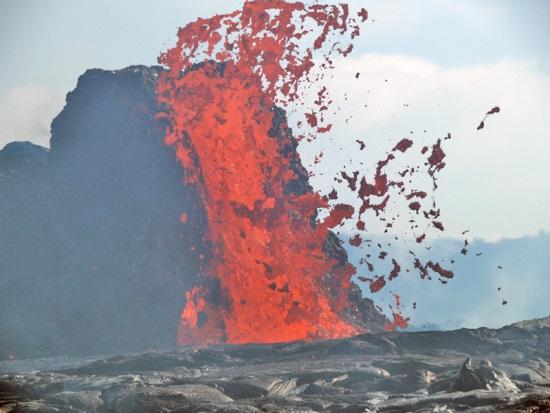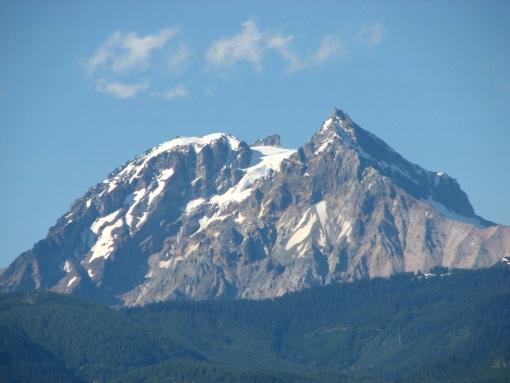What is a volcano?

an erupting volcano
Lava gushes from a spatter cone at Kilauea, Hawaii, 2004. Hawaii Volcano Observatory (United States Geological Survey) image.
A volcano is an opening in the earth’s crust through which lava, volcanic ash, and gases escape. Volcanic eruptions are partly driven by pressure from dissolved gas, much as escaping gases force the cork out of a bottle of champagne. Beneath a volcano, liquid magma containing dissolved gases rises through cracks in the Earth’s crust. As the magma rises, pressure decreases, allowing the gases to form bubbles. How the magma (lava) behaves when it reaches the surface depends on both its gas content and chemical composition. Lavas with low silica contents have low viscosities and flow freely, allowing any gas bubbles to escape readily, while lavas with high silica contents are more viscous (resistant to flow), so that any trapped gases cannot escape gradually.

Mount Garibaldi, a potentially active volcano in southwest British Columbia, located within 30 km of the towns of Whistler and Squamish.

Nazko cone, a small eroded cinder cone in central British Columbia.

Images of volcanic eruptive behavior
How the silica and gas content of lava affect volcano eruptive behaviour. Images courtesy of (a) and (c) Hawaii Volcano Observatory (HVO), (b) United States Geological Survey (USGS) /Alaska Volcano Observatory (AVO) (Clucas), and (d) USGS/AVO (McGimsey).
- A low viscosity (runny) lava, like basalt that contains lots of gas, forms fire-fountains, spewing spectacularly into the air and breaking into globs that solidify as they fall to the ground. Small fire-fountain eruptions produce cinder cones (like Eve Cone in northern British Columbia).
- When runny lava contains less gas, however, it erupts in outpouring lava flows. Repeated fire-fountain and lava flow eruptions over long time periods form gently sloping shield volcanoes like Anahim Peak in central British Columbia, and the volcanoes of the Hawaiian Islands.
- Andesite, dacite, and rhyolite lavas are progressively higher in silica and more viscous, so gases cannot escape gradually. If high-silica lavas contain little trapped gas, they may ooze slowly onto the surface to pile up as steep-sided lava domes.
- When high-silica lavas contain lots of trapped gas, the pressure builds up and is released in explosive eruptions that produce volcanic ash. Some volcanoes experience both explosive and non-explosive activity, alternating explosive eruptions with periods of dome-building, forming stratovolcanoes like Mount St. Helens and Mount Garibaldi.